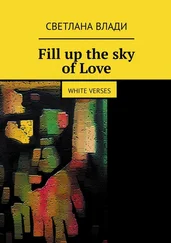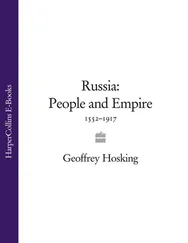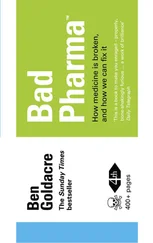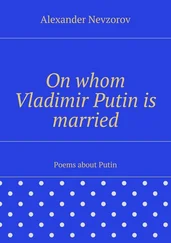For those who remembered the Brezhnev years, by 2010 there was something in the air of history repeating itself. Like Putin, Brezhnev was not always a synonym for stagnation but in his earlier years was seen as a dynamic young man delivering impressive growth in real incomes and industrial development. This switch to the regime being perceived as politically and intellectually fossilized began in 1972. That year, under a media blackout in the paranoid years of the Cold War, a pall of smoke covered Moscow as the surrounding forests burned. The Soviet authorities struggled to respond to the fires – even having to resort to extensive bulldozing and hurriedly laid concrete firebreaks as flames lapped at the city’s suburbs. That summer, a cholera epidemic broke out in the south. Quarantine regimes were frantically imposed on the Crimea, Kazan and Astrakhan. The Kremlin seemed incapable of protecting its own citizens and Moscow’s silence only left them aggrieved and confused. Just like Brezhnev, Putin’s reputation was stained by his inability to respond effectively to natural disasters and infrastructure breakdowns during the Medvedev presidency. As in the late USSR, these shocks framed the government as dysfunctional, amateurish and ill-prepared.
The 2010 forest fires were a turning point for Putin’s reputation. The blazes streaking across the whole Russian continent even smothered the capital in thick poisonous smog for several days, reeking of the surrounding burning peat bogs. It was thick enough to obscure St. Basil’s from one end of Red Square. Officials refused to disclose the scale of the disaster to an angered public, but estimates are that as many as 56,000 died from the heatwaves, smog and fires that summer. 25Officials seemed incompetent, as military installations were engulfed by flames, despite their protestations that all was under control. Nationwide the fire service proved so inadequate that vigilante groups were formed to save dachas and villages, whilst young people set up support groups and hotlines to make up for insufficient public services. A vague panic gripped the wealthiest Muscovites. Flights abroad were snapped up and the elite began to curse the Putin team; ‘this time they cannot even protect us’, became a refrain. Others groaned, ‘We now have Asiatic smog thanks to our Asiatic system.’ To this background Putin’s intense telepopulism, which involved flying a fire-fighting plane personally, ‘calling’ Medvedev from the ‘scene’ to compensate those made destitute, came across for the first time as misleading propaganda.
It was becoming clear to the public that the vertical of power did not really exist. Unlike overmanaged Soviet Russia, problems echoed those of the weak tsarist state. During the Medvedev presidency the ‘tandem’ was exposed as having to use ‘manual control’ to micro-manage industrial disputes, forest fires and anti-terror drills. Whereas Putin was widely mocked in the Western media for dumping water on the forest fires himself, Kremlin insiders did not see it as a laughing matter. In fact the bureaucracy was so appallingly ineffective that Putin is said to have been forced to take personal command of the fire-fighting operation himself, in order for things to get done. So deep was his suspicion that without his personal monitoring of local officials and construction workers, they would not rebuild the incinerated homes, he went as far as to install a video-link to the ground on his desk. As during the sinking of the Kursk, or the siege in Beslan, Putin believed he had been misled by officials assuring him that the situation was under control when it was not.
The difference between this crisis and previous ones was that this was the first taking place in a Russia with a near majority online. This huge potential was waiting to be unlocked. It soon was, but not by Medvedev. On the other side of the world, Grigory Asmolov, the twentysomething son of a former education minister to Yeltsin, now an Israeli, was sitting in Harvard watching his country of birth go up in flames:
They were saying that everything is under control, but the wild fires were everywhere. The evidence was all over the Internet… videos, pictures, blogs and all over YouTube… and some of these were becoming very famous, like these shots of people in cars shooting away from the flames, getting away from the inferno only just in time. There was even smoke in Moscow. There was clearly a gap in the services the government was able to provide to its citizens, and what was needed to help them. All this information was spreading all over the blogosphere… There were all these requests for help, offers to help, guys saying they need food, or they could offer blankets… you could call it spontaneous mass communication… I had this idea. Let’s put all this on one map.
Asmolov approached a friend with ‘technical capacity’ with the idea of using a platform that had been used to coordinate volunteers in Haiti and Chile after quakes. Emailing back and forth they found two or three programmers. In Moscow a ‘situations room’ was thrown up in a flat. At first there were around five to seven volunteers, eventually growing to between ten and fifteen. The site www.russian-fires.ruwas soon a crowdsourcing hub for help.
I didn’t need help. Sitting in a friend’s apartment with the fire-smog outside, I remember just staring at the flame icons on this site. We sat there drinking something disgusting in the heat, horrified at how all Russia was on fire as if attacked, but amazed that somebody had made this map. I remember my friend clicking on various fires, mumbling: ‘Before I saw these maps I felt I was living in the Moscow apocalypse… there’s just no proper information anywhere about what’s going on… the TV telling us that Putin says it’s all fine… it’s such a joke.’
From the apartment window you couldn’t see the ground or the other side of the street. The migrant workers from Central Asia seemed particularly nervous. That night we ended up dancing. The smog had seeped into the club. We were all laughing. But in the morning it hadn’t cleared up. By then everyone was walking around with hastily grabbed surgical masks on to filter the foul air. Asmolov recalls:
The Russian fires were a clear example that the state was unable to provide basic services to people… I just felt that I wanted to help. We had the capacity to do it. And we did it. But you have to understand, the degree of creativity developed by Russian Internet users is a testament to the scale of the problems they are forced to deal with, first and foremost.
As part of Medvedev’s attempts at a more open government, Asmolov was invited to meet him for a frank conversation in a small group. This kind of thing never happened under Putin, and when such ‘experts’ did meet him, they were quiet, waiting for their turn to speak. Asmolov says: ‘Personally, he was a very nice person to talk to… He was very informal, very “cool” you could say… very friendly. He didn’t say anything stupid. He really looked very interested.’
Medvedev promised the group a number of things. These included an investigation into the Internet attacks on anti-government websites, widely believed to have sponsors inside the Kremlin and Nashi. Asmolov smiled: ‘Nothing happened on Internet attacks of course… and no, I wasn’t disappointed. I have no expectations of Russia, so how could I be disappointed?’
The forest fires were merely the worst incident in the increasingly visible weakness of the vertical of power. Putin was forced to step up his ‘manual control’ with the beginning of the financial crisis. An outbreak of industrial unrest in the single-industry town of Pikalyovo saw him rush to the scene. This was not just telepopulism but micro-management betraying a nervousness that if the matter was not fixed fast it could escalate. Manual control went as far as workers receiving text messages informing them their salaries had been paid. US diplomats were scathing in their cables about what the incident revealed:
Читать дальше












